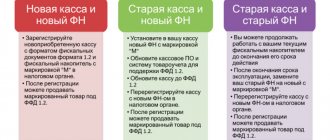Some terminology
In practice, six types of number of employees are used, which differ in calculation methods and methods of reporting:
- normative - established by labor standards and the volume of work to be performed (ideal value);
- planned - depends on the type of activity, size of the enterprise, production volume, availability of vacant jobs and other factors (more realistic than normative - determined according to the data of a specific enterprise);
- average - the average number of employees of the organization for the reporting period, not counting external part-time workers and those working under contract agreements;
- actual - the number of employees of the enterprise on a certain date;
- full-time - employees whom the manager approved in the company’s staffing table (excluding seasonal workers);
- attendant - personnel of the organization who are at the workplace.
The concept of staffing levels is not enshrined in law. It is used in personnel matters and means employees of the required specialty and qualifications who ensure the successful operation of the enterprise and the implementation of plans.
Calculate salaries and maintain personnel documents in Kontur.Accounting. Accounting, taxes, salaries, reporting with sending via the Internet in one service. Get free access for 14 days
Who is not included in the payroll
The following are not included in the payroll:
- hired part-time from other companies (their records are kept separately);
- performing work under civil law contracts (contracts, services, etc.);
- recruited to work under special contracts with government agencies for the provision of labor (military personnel or those serving a sentence of imprisonment). Moreover, they are taken into account in the average number;
- those who wrote a letter of resignation and did not return to work before the notice period for dismissal expired (they are excluded from the workforce from the first day of absence from work);
- owners of the company who do not receive a salary from it;
- transferred to work in another company, if they do not retain their wages at their previous place of work, as well as those sent to work abroad;
- those sent for off-the-job training and receiving a stipend at the expense of the company that sent them;
- with whom a student agreement for training and additional professional education has been concluded (Article 197 of the Labor Code of the Russian Federation) and who receive a scholarship during their studies;
- lawyers;
- members of the cooperative who have not entered into employment contracts with the company;
- military personnel in the performance of military service duties.
The number of employees on the payroll is given not only for a specific date (for example, on the first or last day of the month), but also for the reporting period (for example, for a month, a quarter).
EXAMPLE In March of the reporting year, the payroll of JSC Spectr included: – from March 1 to March 12 – 88 people; – from March 13 to March 26 – 92 people; – from March 27 to March 31 – 90 people. Total: 270 people.
The payroll is clarified using the work time sheet, which records the employee’s attendance or absence from work, as well as on the basis of orders (instructions) on the hiring, transfer and dismissal of the employee.
Organizational staff: goals and calculation standards
Staffing levels are calculated to optimize the enterprise's personnel composition and labor costs. During the calculation process, the time it will take an employee to complete work of a certain complexity and the number of employees required for the operation of the enterprise are specified.
For calculations, data developed by research institutes are used. Industry standards are calculated mainly for large enterprises and include typical volumes and complexity of work. Small organizations will have to make their own calculations, taking into account the scale and specifics of their activities.
Methods for calculating staffing levels
At state-owned enterprises, the required number of employees is determined and controlled without fail. Therefore, most calculation methods were developed for public sector companies. Thus, the “Recommendations for determining the staffing level of employees of budgetary organizations based on labor standards” approved by Roszdrav lists methods based on the following standards:
- working time - the working time required by employees to perform a certain job;
- load - the amount of work that an employee or group must complete during working hours;
- service time - workplaces that must be serviced by a specialist during working hours;
- number - the number of employees that one manager can organize.
According to the Recommendations, the maximum staff size of a budgetary institution is calculated using the formula:
| Headcount | = | Total time spent per year (hours) | / | Standard working hours for each employee per year (hours) | × | Absence rate due to illness, vacation, etc. |
Recommendations are given for budgetary enterprises, but the standard is also applied by commercial companies.
Attendance and payroll number of employees: calculation example
Let's consider a conditional example: the enterprise has 50 machines, 4 people are needed to service one machine. Work is carried out around the clock in 4 shifts. The average annual working time of one employee is 325 days. We will calculate the turnout and payroll numbers.
The minimum number of workers required to ensure the process is the turnout number. The company has 50 machines, which employ 4 people at a time in 4 shifts. Thus: Chya = 50 x 4 x 4 = 800.
The payroll includes all employees who are registered at the enterprise. Using the formula, it will not be difficult to determine the payroll:
- Chsp = Chya x Ksp,
- Ksp = 365 / 325 = 1.123,
- Chsp = 800 x 1.123 = 898.
The payroll will be 898 people, and to ensure continuity of the work process, the attendance of 800 people is required.
This formula determines the need for personnel, taking into account vacations and illnesses of workers.
Headcount analysis helps to properly plan personnel management, calculate costs and prevent downtime in the work process. You can find more complete information on the topic in ConsultantPlus. Free trial access to the system for 2 days.
How to calculate the number of employees
One of the formulas for calculating staffing levels is based on comparing revenue with working hours:
N = Ov ÷ (Frv × Vpl × Kvn)
where Ov is the planned volume of work or revenue;
Фрв - planned working time fund in hours (with a 40-hour working week, the time fund averages 2004 hours per year, 167 hours per month);
Vpl - planned output per employee;
KVN is the planned rate of fulfillment of the norm.
Example . The sales department consists of 15 people. Management wants to calculate whether the division can be downsized. To determine the staffing level, the personnel officer used the formula N = Ov ÷ (Frv × Vpl × Kvn).
The planned sales volume indicator for June - December 2022 is 58,000,000 rubles. The working time fund (FWF) for this period is 1,047 hours. The planned output per employee is 755,000 rubles/month. Actual output for July - December 2022 - 644,373 rubles/month. The planned rate of fulfillment of the norm (Kvn) is calculated as the ratio: 755,000 / 644,373 = 1.17. The planned output per hour per employee will be 4,327 rubles/hour (755,000 / 1,047 × 6 months). Substituting the values into the formula, the personnel officer received the result: 58,000,000 / (1,047 × 4,327 × 1.17) = 10.94 - rounded to 11 people. Therefore, at first glance, there is an excess of staff in the sales department.
This formula does not take into account working conditions, the specifics of the enterprise’s activities and the human factor (people are not robots, they get sick, go on vacation, etc.).
Solving problem 2.
We calculate how many warehouse employees should work per shift during a six-day work schedule with one day off.
First we need to calculate the amount of work per shift.
This is not difficult - with a six-day week, the warehouse operates 26 days in September.
We divide the monthly volume by the number of shifts, we get the shipment volume per shift - 39288/26 = 1511 - this is how many units of goods the warehouse must ship in September in one shift.
A shift lasts 8 hours; in order to understand how much volume a warehouse employee can handle in 8 hours, we multiply the production rate (52 units of goods per hour) by the number of hours per shift (8).
The employee will have time to ship 52*8=416 units of goods in 8 hours
Well, then everything is quite simple - there is a volume per shift (1511 units of goods), there is a production rate per shift (416 units of goods per employee) - 1511/416 = 3.6 employees per shift, from which it follows that it is advisable to transfer shift of 4 warehouse employees.
Perhaps the load will be unevenly distributed across shifts, then on some days 3 employees will be enough for us, and on other days 4 employees will be busy.
So, the problem is solved - for an 8-hour shift with a six-day work week, depending on the load, we need 3 or 4 employees.
Determination of staffing taking into account the human factor
The calculation of the number of employees is carried out on the basis of the standard - an ideal situation in which all employees are present at the workplace. The standard value does not take into account that employees go on vacation, get sick, etc. To adjust the calculation, the absenteeism coefficient (Kn) is used, which is determined by accurately recording the attendance and non-appearance of personnel from the working time fund:
Kn = 1 + Dn
where Kn is the planned rate of staff absenteeism;
Day - the share of “not working” in the working time fund - the percentage of planned absenteeism / 100.
Taking into account this coefficient, the formula for calculating the standard value will take the form Shch = N × Kn . This formula allows you to determine the optimal number of employees and not overspend the salary fund.
Example . The HR employee determined that the standard size of the sales department is 10.9 people. To clarify the value, he calculated the absenteeism rate (Kn) for the period July - December 2022.
The calculation takes into account 35 non-working days with a 40-hour work week, of which 14 are paid leave, 14 are the norm for sick leave, 7 are without pay according to the Labor Code of the Russian Federation. This amounts to 280 hours (35×8).
The share of “not working” (Day) is equal to the ratio: 280 (absenteeism) / 1,047 (working time fund). The result is 0.27. Absenteeism rate for July-December 2022: 1+0.27=1.27. The optimal number of employees will be 10.9 × 1.27 = 13.8 or 14 people. Therefore, the sales department can be reduced by 1 employee.
Indicators of the number and composition of employees of an industrial enterprise
Personnel is a set of employees of various professional and qualification groups employed at the enterprise and included in its payroll.
The purpose of statistical analysis of an enterprise's personnel is to obtain a general qualitative assessment of its composition and an assessment of the level of efficiency of its use in order to develop recommendations for increasing the level of labor productivity and the quality of use of working time.
The main objectives of labor force statistics are:
- studying the composition of industrial workers and the distribution of their numbers by gender, age, level of education and other characteristics;
- analysis of the implementation of the plan for the number of employees and the availability of workers in the relevant professions and qualifications;
- studying the training of qualified workers;
- characteristics of the movement of the number of employees;
- analysis of working time use;
- analysis of labor productivity and search for reserves for increasing it.
Sources of information for analysis: “Report on labor” - form No. 12-t, “Report on the composition of the wages and other payments” - form No. 6-t, “Report on the composition of the calendar fund of time” - form No. 4-labor, time card data accounting and human resources department.
Categories of enterprise personnel during its statistical analysis are studied in detail in groupings according to individual characteristics: professions and positions held, length of service, education, gender, age, qualifications, etc.
The following personnel numbers are used in the calculations:
1. The list of personnel includes all those hired for permanent, seasonal, and temporary work for a period of 1 day or more, from the day they were hired. It is determined for each day according to time sheet data by summing up all appearances and absences from work: TS = TY + TN
2. The number of people present is determined by the number of workers who go to work. It is less than the payroll number by the number of no-shows.
3. The number of people actually employed reflects the number of people who showed up and started work. It is less than the turnout number by the number of full-day downtimes.
4. Average payroll number ( ) - is determined by summing the payroll number of employees for each calendar day, including holidays and weekends, and dividing the resulting value by the number of calendar days in the period:
5. Average attendance ( ) - determined by dividing the number of people who showed up for work by the number of working days in the period:
6. Average number of actual employees () - calculated by dividing the number of employees for the period by the number of working days in the period:
7 . The labor force utilization rate characterizes the degree of labor force utilization and represents the ratio of the average number of actual workers to the average number on the payroll:
When carrying out the analysis, the dynamics of these indicators and their impact on the performance indicators of the enterprise are studied.
To carry out the analysis, analytical tables are compiled containing the grouping of personnel according to the characteristics being studied, as well as indicators of their structure and dynamics.
Personnel is a set of employees of various professional and qualification groups employed at the enterprise and included in its payroll.
The purpose of statistical analysis of an enterprise's personnel is to obtain a general qualitative assessment of its composition and an assessment of the level of efficiency of its use in order to develop recommendations for increasing the level of labor productivity and the quality of use of working time.
The main objectives of labor force statistics are:
- studying the composition of industrial workers and the distribution of their numbers by gender, age, level of education and other characteristics;
- analysis of the implementation of the plan for the number of employees and the availability of workers in the relevant professions and qualifications;
- studying the training of qualified workers;
- characteristics of the movement of the number of employees;
- analysis of working time use;
- analysis of labor productivity and search for reserves for increasing it.
Sources of information for analysis: “Report on labor” - form No. 12-t, “Report on the composition of the wages and other payments” - form No. 6-t, “Report on the composition of the calendar fund of time” - form No. 4-labor, time card data accounting and human resources department.
Categories of enterprise personnel during its statistical analysis are studied in detail in groupings according to individual characteristics: professions and positions held, length of service, education, gender, age, qualifications, etc.
The following personnel numbers are used in the calculations:
1. The list of personnel includes all those hired for permanent, seasonal, and temporary work for a period of 1 day or more, from the day they were hired. It is determined for each day according to time sheet data by summing up all appearances and absences from work: TS = TY + TN
2. The number of people present is determined by the number of workers who go to work. It is less than the payroll number by the number of no-shows.
3. The number of people actually employed reflects the number of people who showed up and started work. It is less than the turnout number by the number of full-day downtimes.
4. Average payroll number ( ) - is determined by summing the payroll number of employees for each calendar day, including holidays and weekends, and dividing the resulting value by the number of calendar days in the period:
5. Average attendance ( ) - determined by dividing the number of people who showed up for work by the number of working days in the period:
6. Average number of actual employees () - calculated by dividing the number of employees for the period by the number of working days in the period:
7 . The labor force utilization rate characterizes the degree of labor force utilization and represents the ratio of the average number of actual workers to the average number on the payroll:
When carrying out the analysis, the dynamics of these indicators and their impact on the performance indicators of the enterprise are studied.
To carry out the analysis, analytical tables are compiled containing the grouping of personnel according to the characteristics being studied, as well as indicators of their structure and dynamics.







